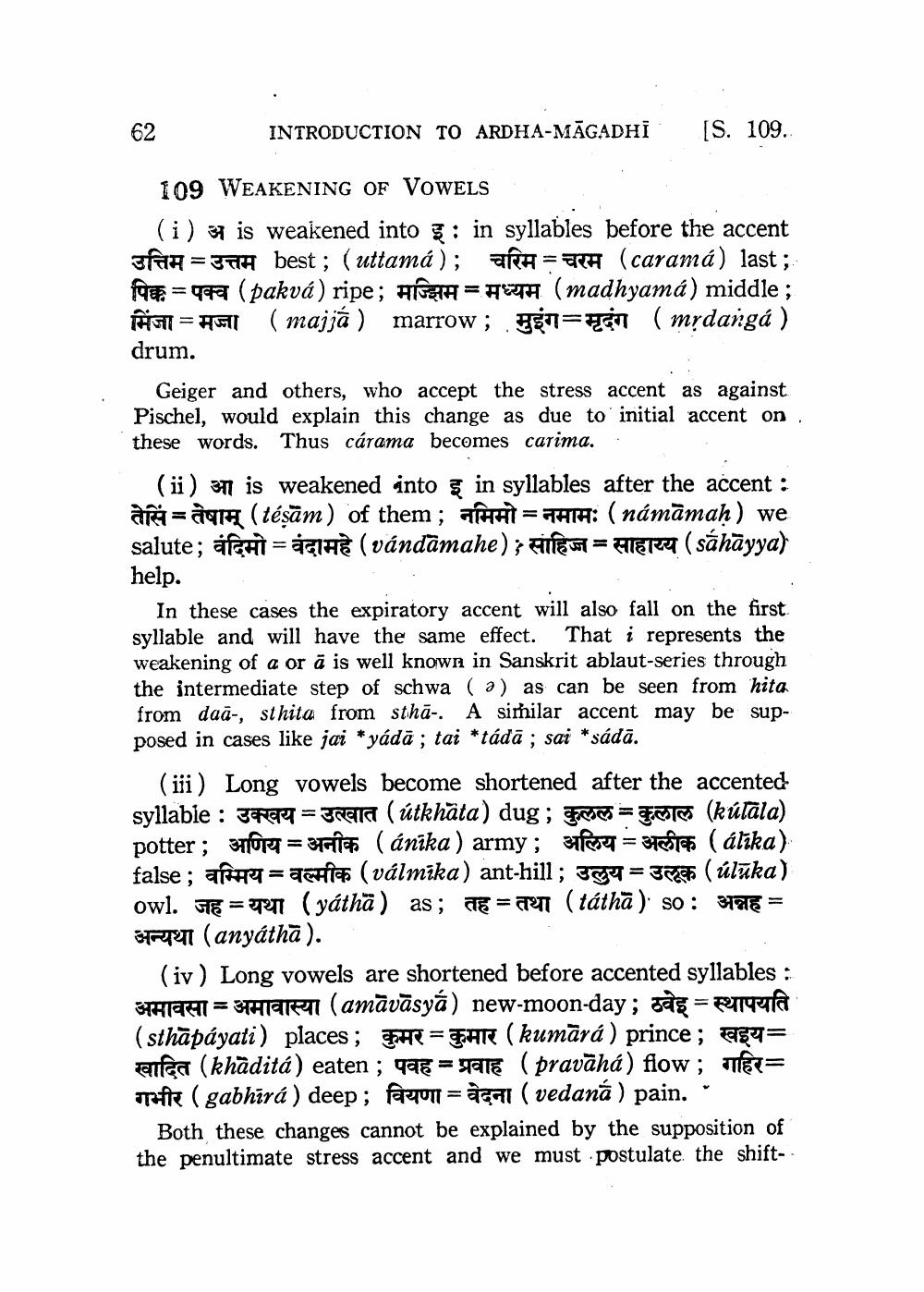________________
62
INTRODUCTION TO ARDHA-MĀGADHI
(S. 109.
109 WEAKENING OF VOWELS (i) 37 is weakened into 3: in syllables before the accent FAH = 3TIA best ; (uttamá); DRA=ITH (caramá) last; 199 = 94 (pakvá) ripe; H A = ARTH (madhyamá) middle; PH GTI = HAI (majjá ) marrow; $7= (msdangá ) drum.
Geiger and others, who accept the stress accent as against Pischel, would explain this change as due to initial accent on these words. Thus cárama becomes carima..
(ii) 371 is weakened into sin syllables after the accent : an=aar (tésām) of them; AH = HATA: (námāmaḥ) we salute; af = SEIHE (vándāmahe) ; FILEJH = HERT (sáhāyya) help.
In these cases the expiratory accent will also fall on the first syllable and will have the same effect. That i represents the weakening of a or ā is well known in Sanskrit ablaut-series through the intermediate step of schwa ( ) as can be seen from hita from daa-, sthita from sthā-. A similar accent may be supposed in cases like jai *yádā; tai *tádā; sai *sádā.
(iii) Long vowels become shortened after the accented syllable : उक्खय = उत्खात (utkhata) dug; कुलल कुलाल (kurala) potter; आणिय = अनीक (anika) army; अलिय = अलीक (alika) false ; वम्मिय = वल्मीक (valmika) ant-hill; उलुय = उलूक (alaka) owl. Fe = 72T (yátha) as; e = 7271 (tátha) so: 31€ = Fram (anyátha).
(iv) Long vowels are shortened before accented syllables : Th1991= SHTETT (amāvāsyā) new-moon-day ; 3a = pula (sthāpáyati) places; R = FAR ( kumāra ) prince; Esg= afea (khäditá) eaten ; qa6 = Tae (pravāhá) flow; TEE nafte ( gabhîrá) deep ; fecon=(vedaná ) pain."
Both these changes cannot be explained by the supposition of the penultimate stress accent and we must postulate the shift




